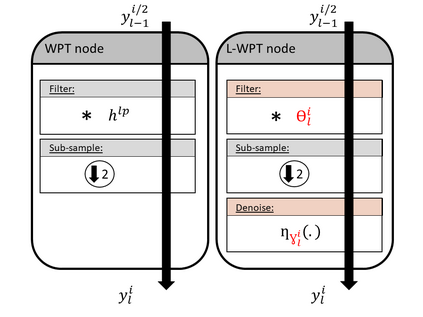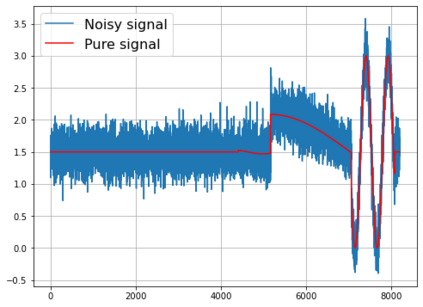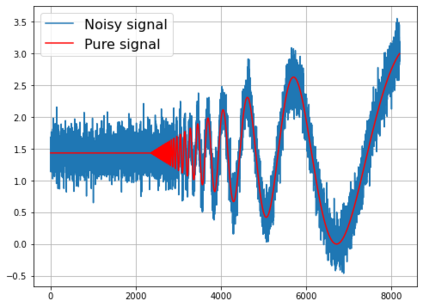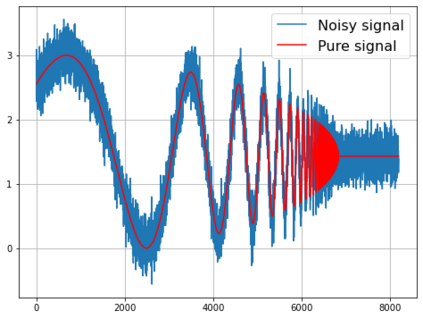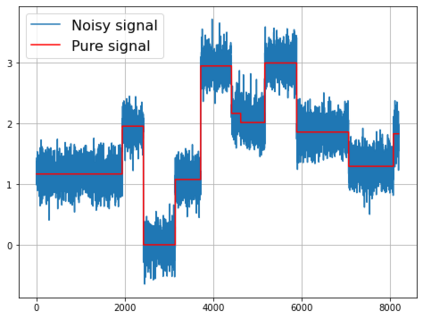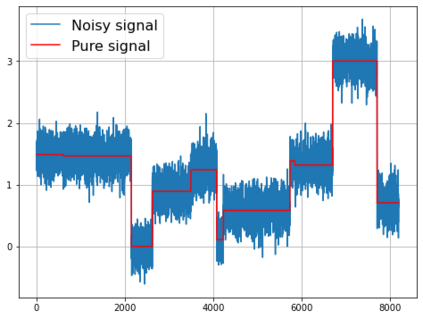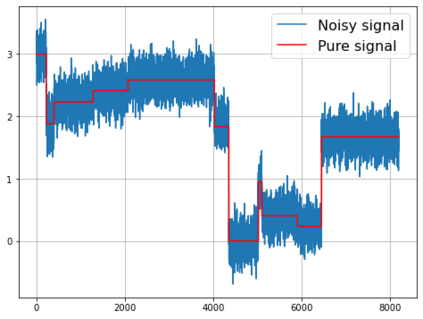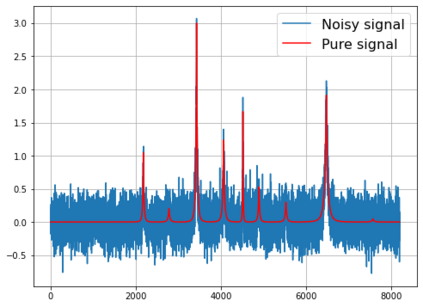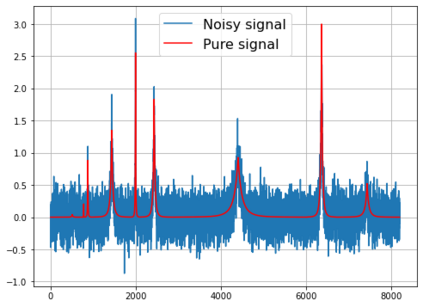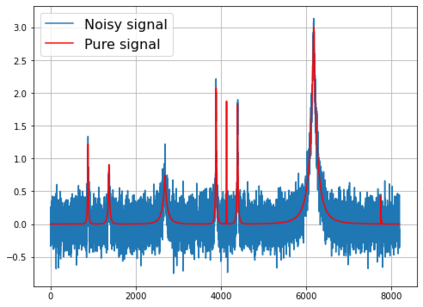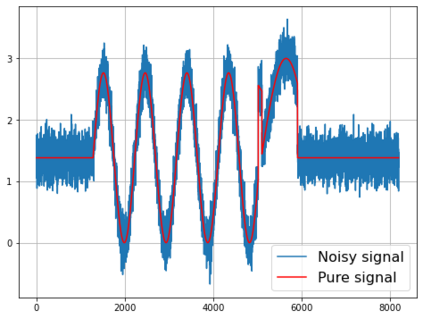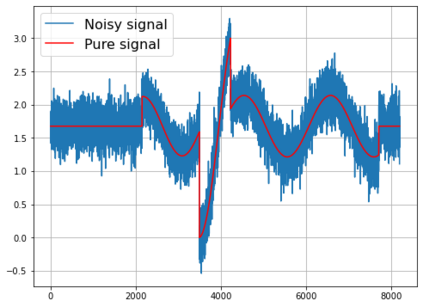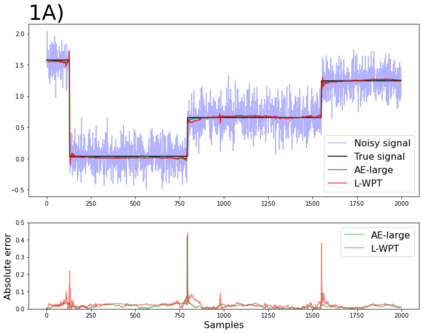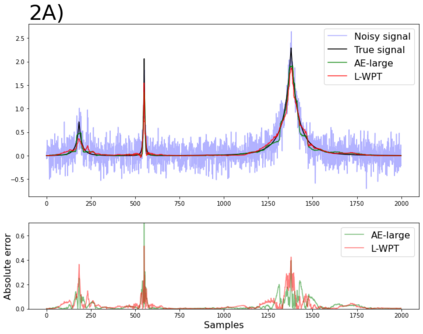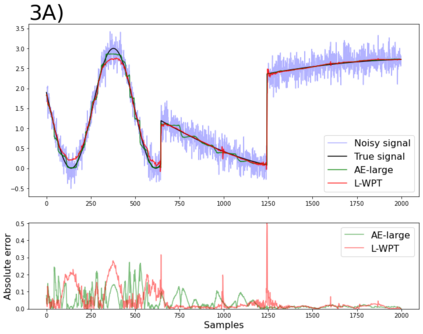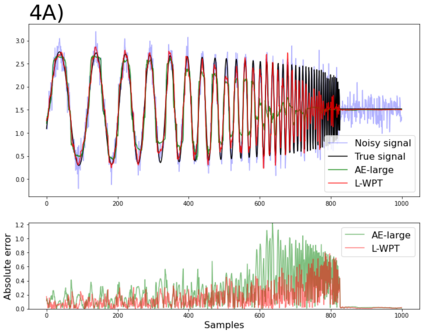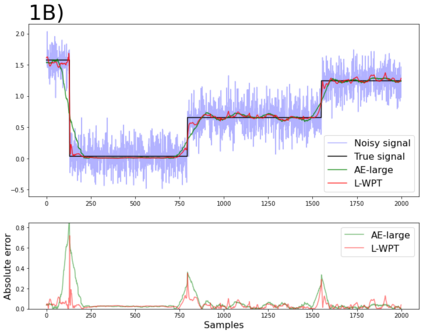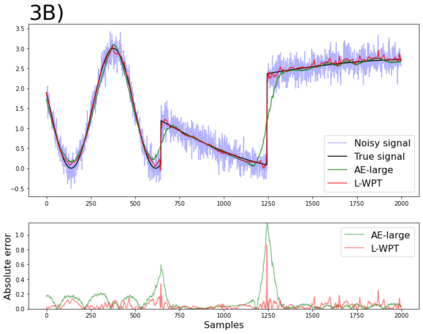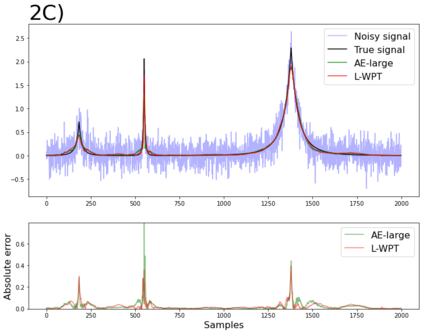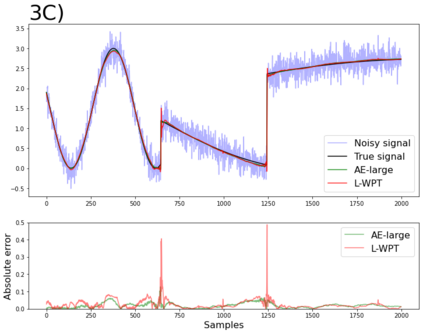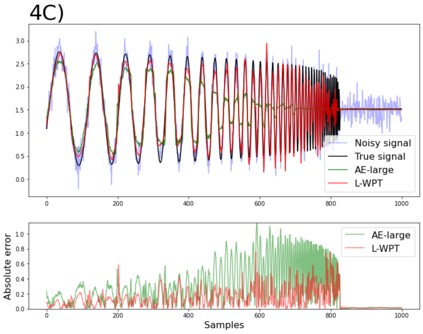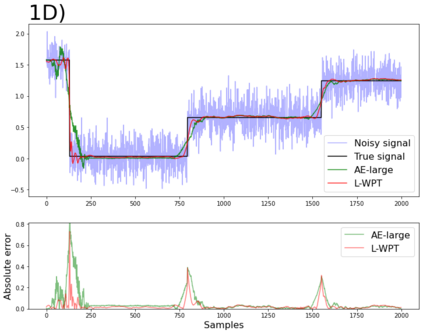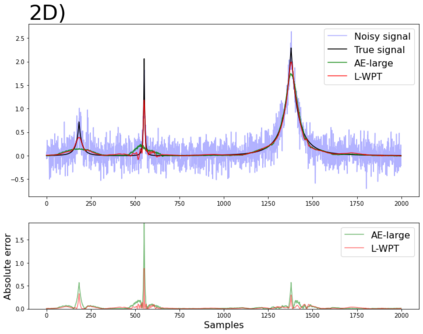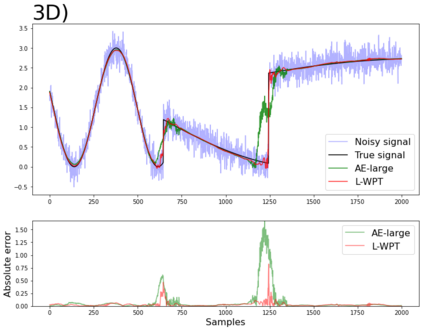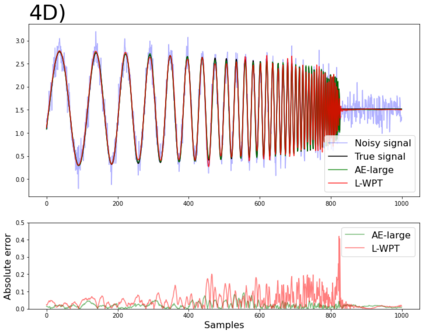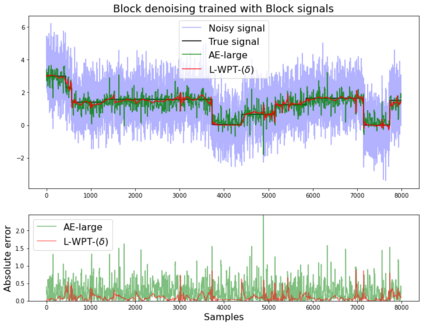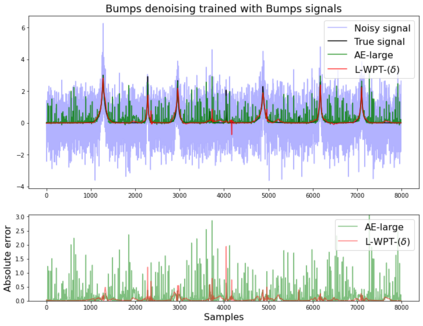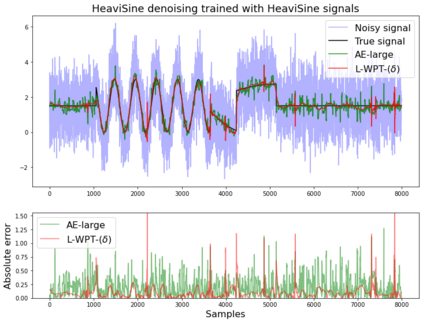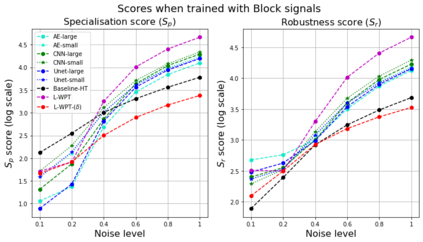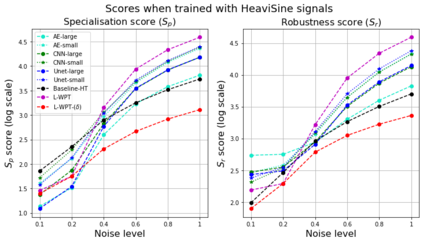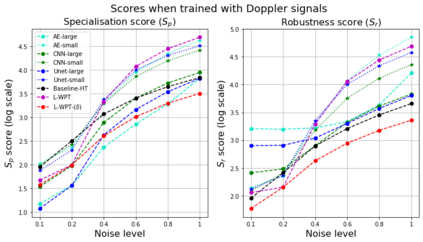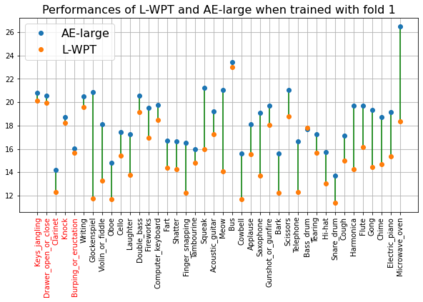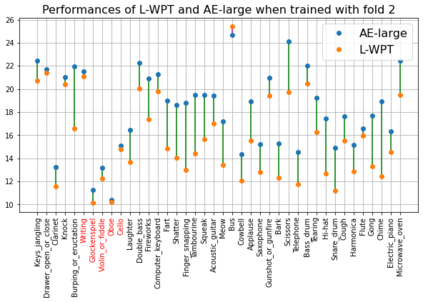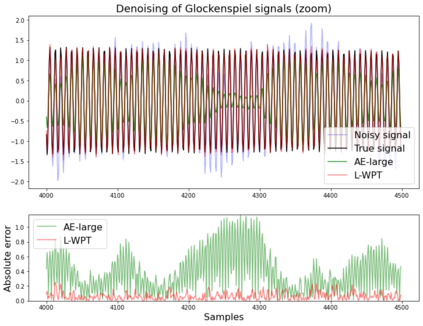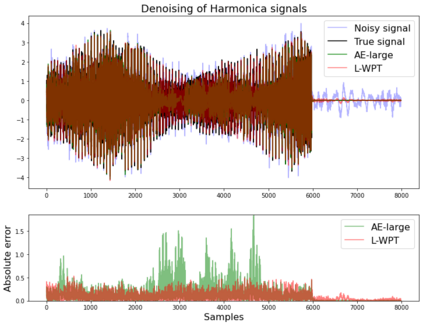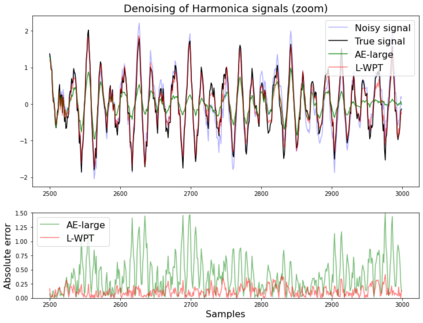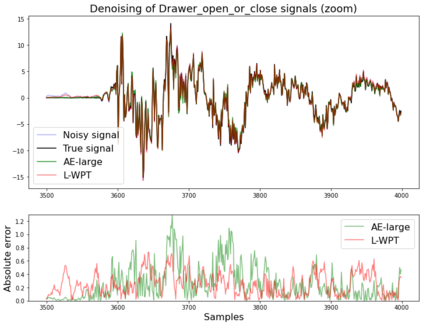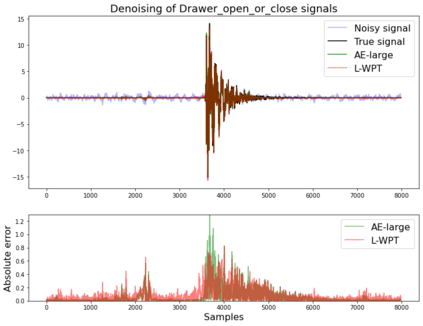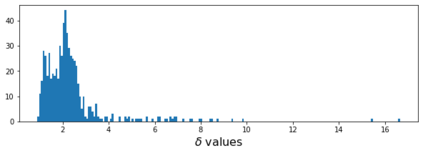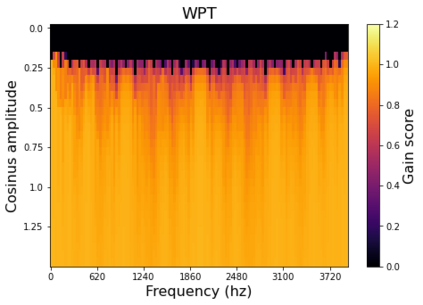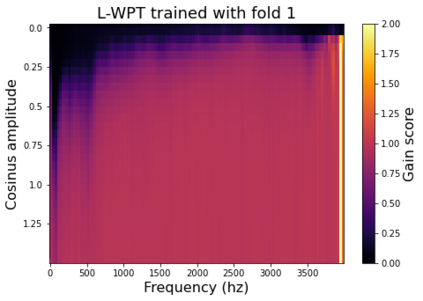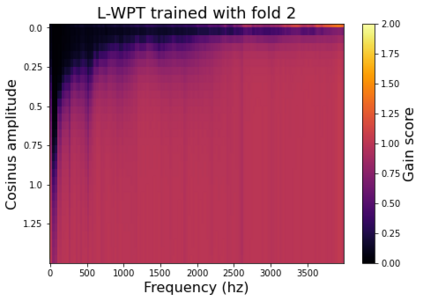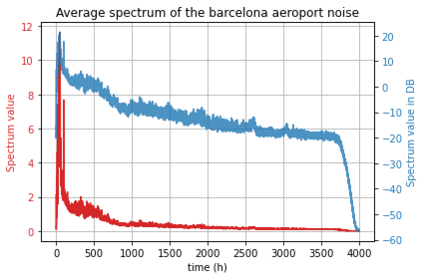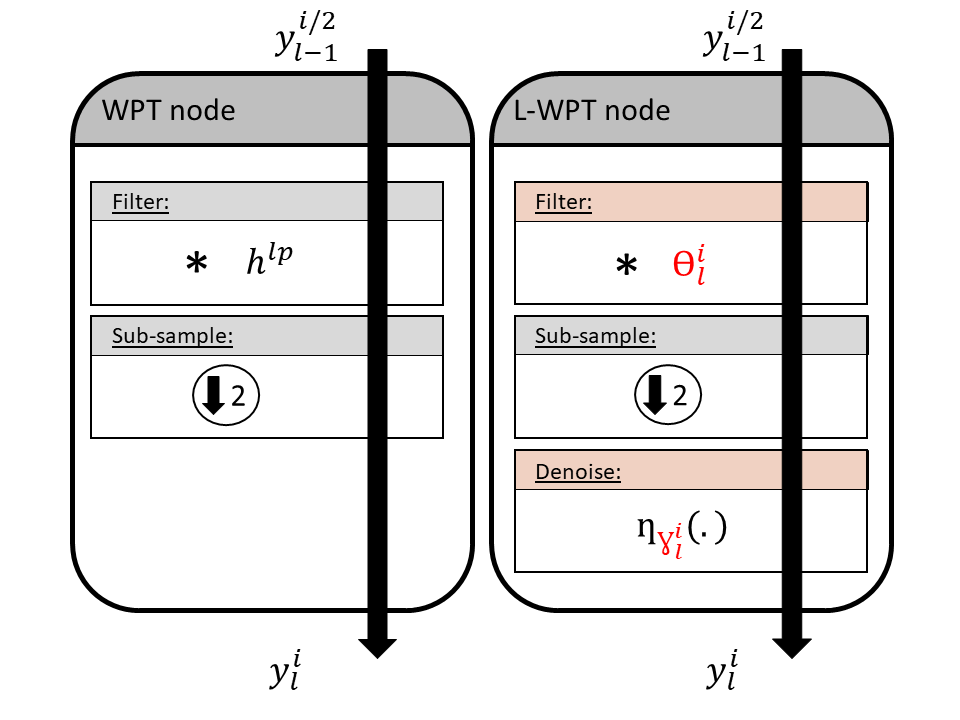Signal denoising is a key preprocessing step for many applications, as the performance of a learning task is closely related to the quality of the input data. In this paper, we apply a signal processing based deep neural network architecture, a learnable extension of the wavelet packet transform. As main advantages, this model has few parameters, an intuitive initialization and strong learning capabilities. Moreover, we show that it is possible to easily modify the parameters of the model after the training step to tailor to different noise intensities. Two case studies are conducted to compare this model with the state of the art and commonly used denoising procedures. The first experiment uses standard signals to study denoising properties of the algorithms. The second experiment is a real application with the objective to remove audio background noises. We show that the learnable wavelet packet transform has the learning capabilities of deep learning methods while maintaining the robustness of standard signal processing approaches. More specifically, we demonstrate that our approach maintains excellent denoising performances on signal classes separate from those used during the training step. Moreover, the learnable wavelet packet transform was found to be robust when different noise intensities, noise varieties and artifacts are considered.
翻译:信号脱去是许多应用程序的关键预处理步骤, 因为学习任务的执行情况与输入数据的质量密切相关。 在本文中, 我们应用基于信号处理的深神经网络结构, 是一个可以学习的波盘变换扩展。 作为主要优点, 这个模型没有多少参数, 一个直观的初始化和强大的学习能力。 此外, 我们显示, 在培训步骤之后很容易修改模型参数, 以适应不同的噪音强度。 进行了两个案例研究, 以比较这个模型与最先进的和常用的去音化程序。 第一次实验使用标准信号来研究算法的去音特性。 第二项实验是真正的应用, 目的是消除声音背景噪音。 我们显示, 学习的波盘变换具有深学习方法的学习能力, 同时保持标准信号处理方法的稳健性。 我们更具体地证明, 我们的方法保持了与培训步骤中使用的信号班不同的信号班级上极好的去音性性表现。 此外, 当不同的定质噪音、 噪音和噪音被考虑时, 可学习的波盘变换是稳健的。

